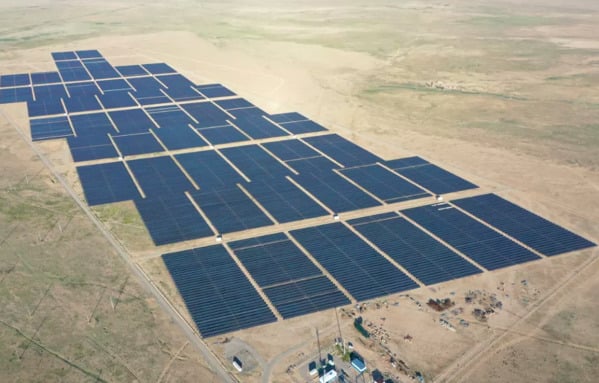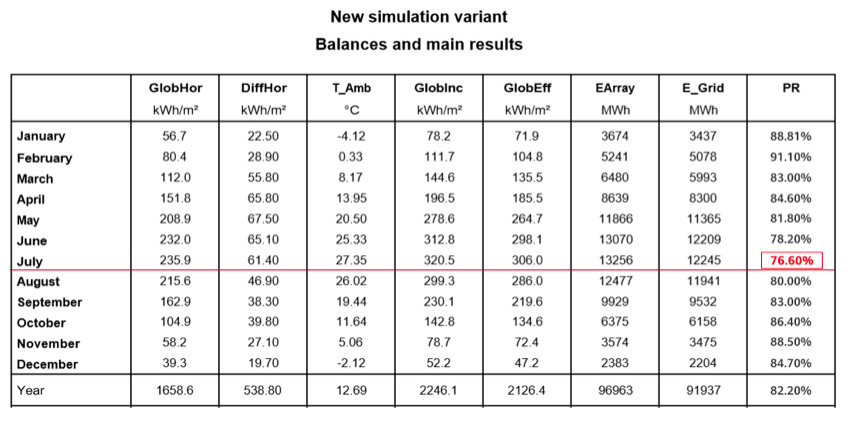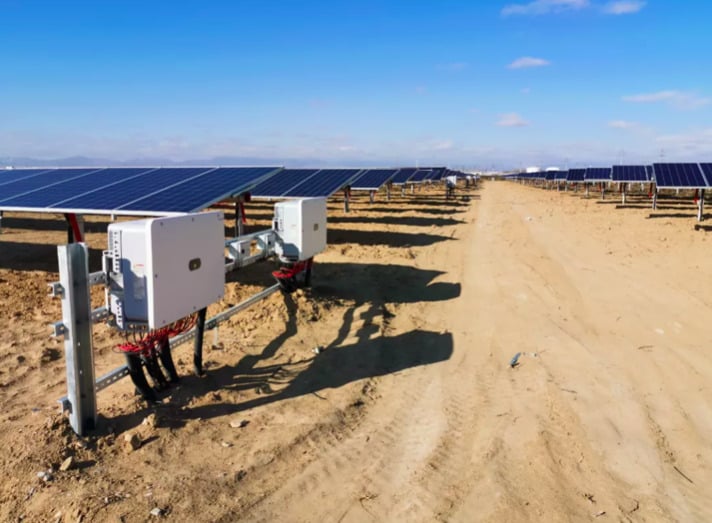
Kazakhstan sees 2,200–3,000 hours of sunshine annually, bringing great potential for PV development. The 50 MW PV plant in question, backed by the investor Risen Energy, is a special plant among the 37 plants currently operating in Kazakhstan, located in Chulakkurgan, Turkistan. There, the winds are strong, the sand is heavy, and the climate is harsh. Data from the weather station shows that the lowest recorded temperature is –27°C and the highest 42°C. Nevertheless, the actual performance ratio (PR) measurement result of the plant in July was 80.39%, which is 3.8% higher than the simulated value. Considering it is located in such an extreme environment, the energy yield has significantly exceeded design and return on investment (ROI) expectations, despite the odds being against it.
Onsite tests were performed according to IEC 61724: Photovoltaic System Performance Monitoring. The test result is as follows:

As shown, the highest actual PR was 82.44%, with the 7-day weighted average 80.39%. According to the system report submitted to the supervisor for review, the simulated PR for July was 76.6%, the actual PR being 3.8% higher.

How was this PV plant able to exceed expectations so dramatically? The project uses Risen Energy 330 W polycrystalline PV modules, Huawei SUN2000-185KTL string inverters, and Arctech Solar Skyline 1V84 trackers. The string inverters work with the trackers, and the PV modules move by tracking the sun, ensuring the optimal status of each PV string in the plant. The project owner was very complimentary about Huawei's string inverters for their outstanding performance in ensuring the efficient and reliable operation of the plant.

The Huawei inverter's multi-MPPT feature can help minimize the impact of PV string mismatches during dusty and cloudy weather. A 3.5 MW PV array supports 170 MPPT routes to ensure that each PV string works at its optimum, which in turn brings higher energy yields. Not only this, but the Huawei SUN2000 series string inverters can operate over a wide temperature range, which is ideal for environments with extremes of hot and cold temperatures such as Kazakhstan. They can run stably in a temperature range of –40°C to 60°C, with availability reaching over 99.996%. Extremely hot or cold conditions would normally present severe challenges to components. Huawei employs high component selection standards and patented heat dissipation technologies to ensure the reliability of all components, even in difficult or severe environments.
In addition, Huawei string inverters use low power consumption control technology, power supply technology with a wide input voltage range, and power component shutdown peak suppression technology. They also support an operating voltage range as wide as 500–1500 V. A lower operating voltage lower limit enables inverters to start early and shut down late every day, which allows them to generate more electricity.

The success of this project is inseparable from the meticulous design and optimization of Risen Energy’s Overseas Project Technical Team based in China. Jeff Lv, Technical Director, were on site personally for inspection and research. Under his guidance, the technical team of Risen Energy compared more than 100 system design solutions with automatic configuration and loss algorithms, and analyzed the cost and benefit sensitivity. The team optimized and selected the cost structure of each project. The modular and powerful solution design ensures a balance in project cost and quality. The corresponding balance created between cost and energy yield is the key to the high energy yield of the project.
According to data from Kazakhstan’s Ministry of Energy, in the first quarter of 2020 the country generated 548.4 million kWh of electricity using renewable energy, 35.7% of it generated from PV. In the Concept of Transition towards a Green Economy, the Kazakhstan government proposes to increase the proportion of electricity generated from renewable energy to 3% during 2020. We believe that more PV plants with unexpectedly high PR will make the future of Kazakhstan's PV market landscape brighter.

